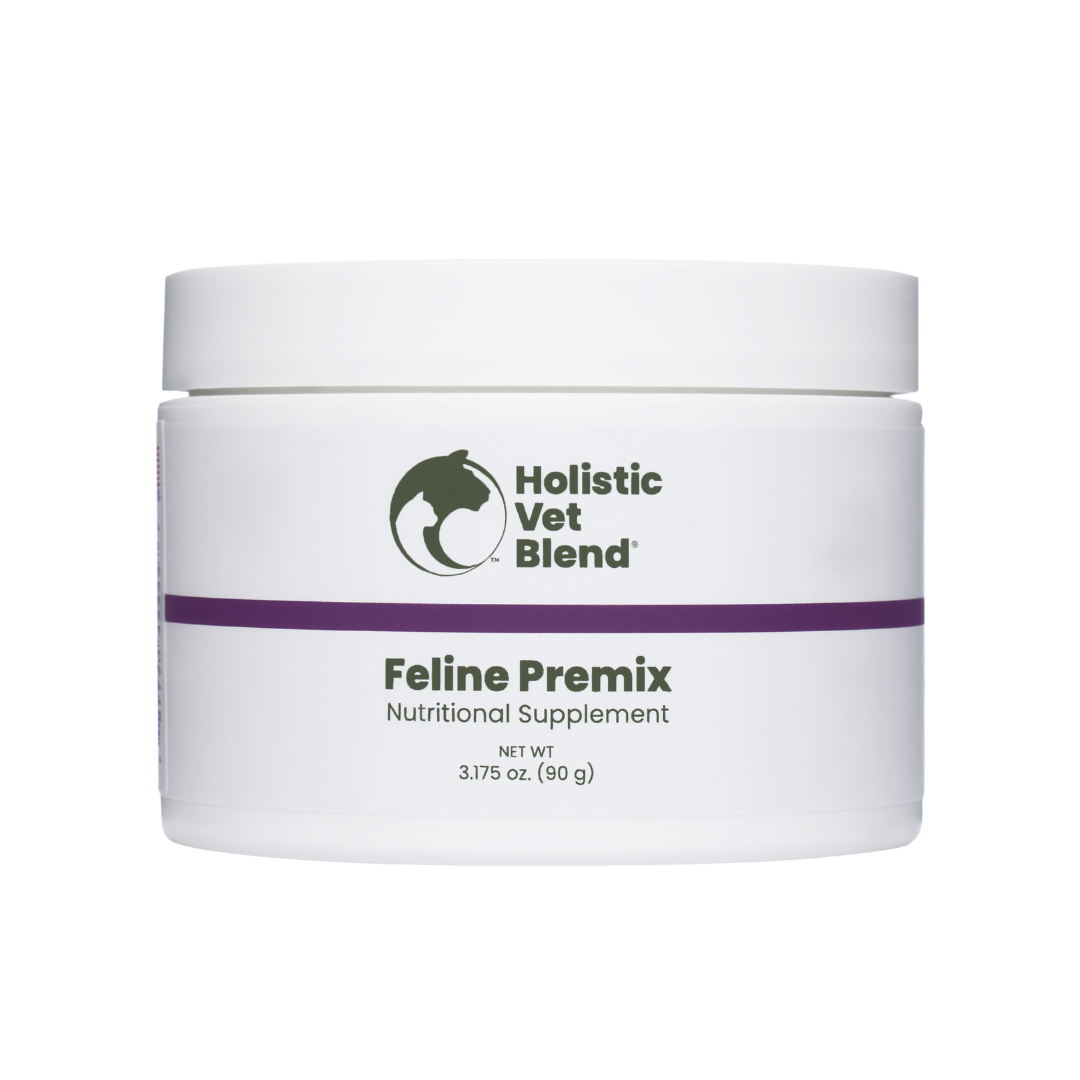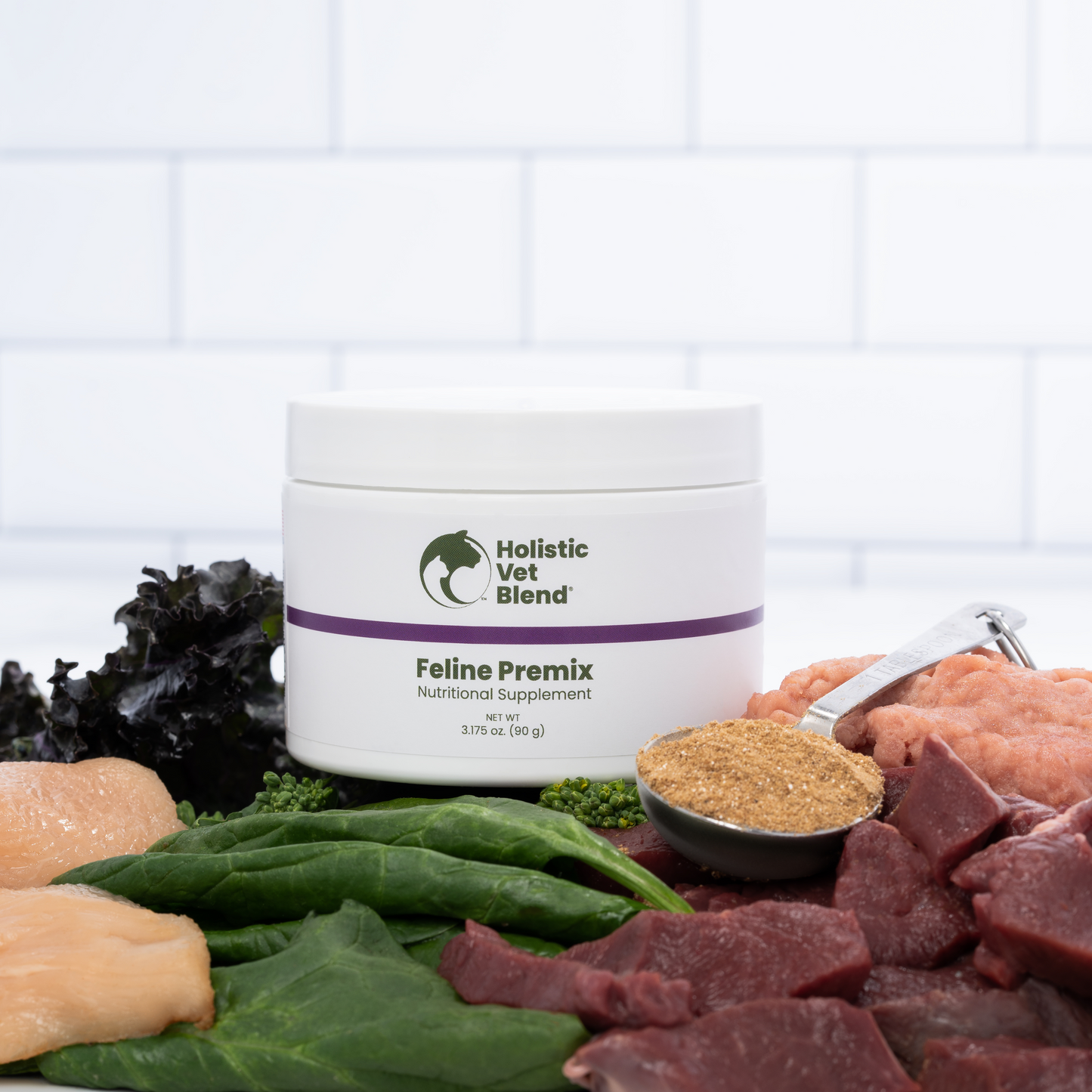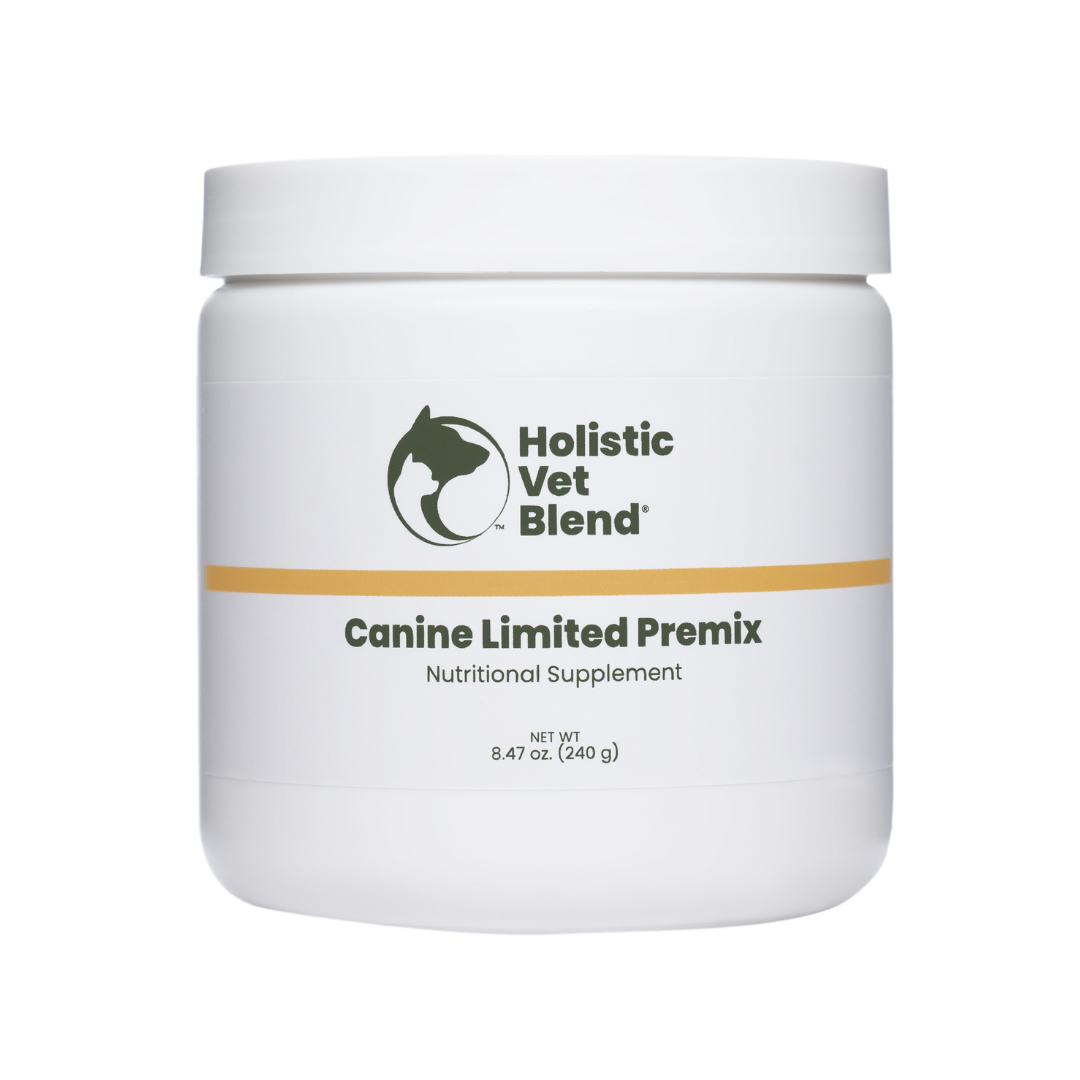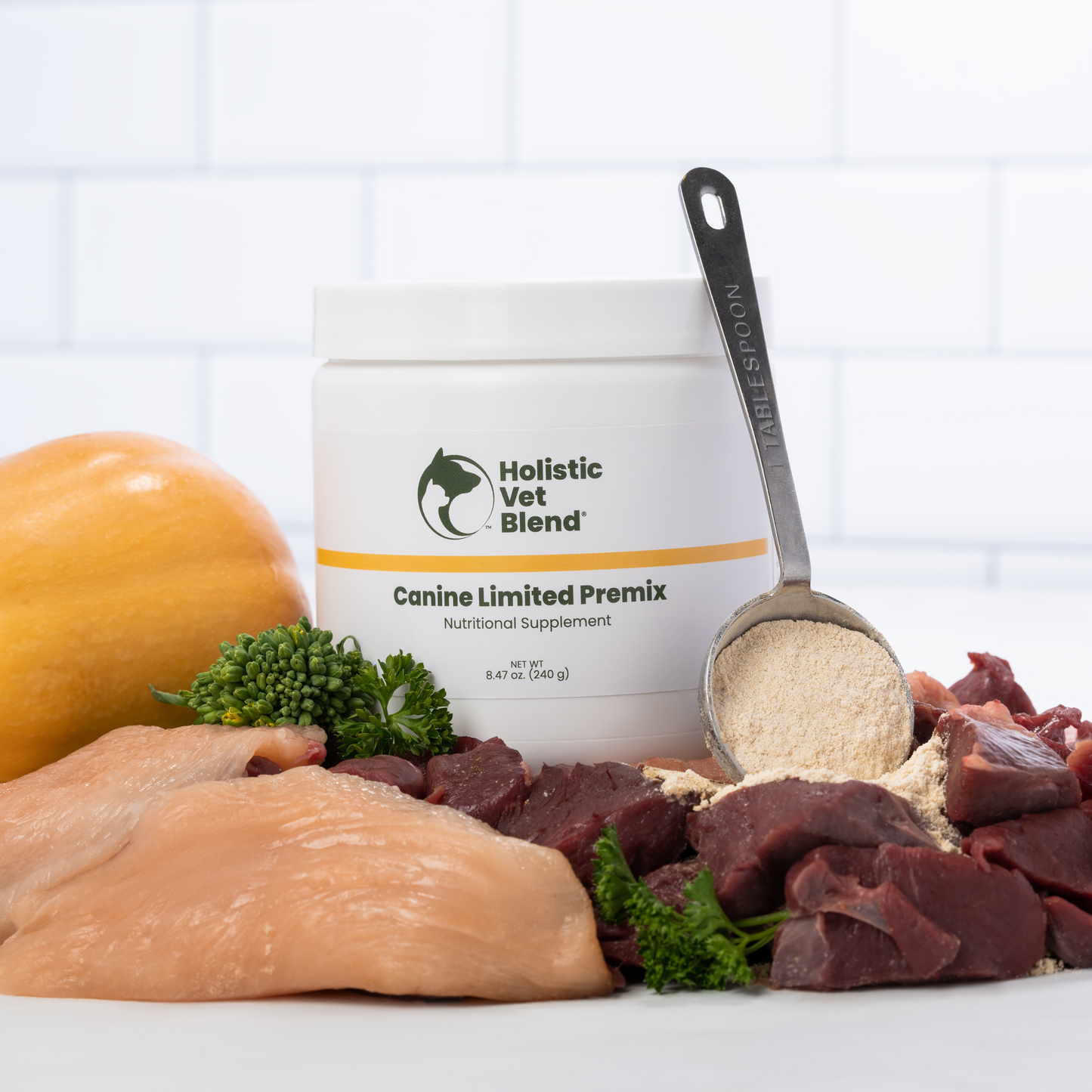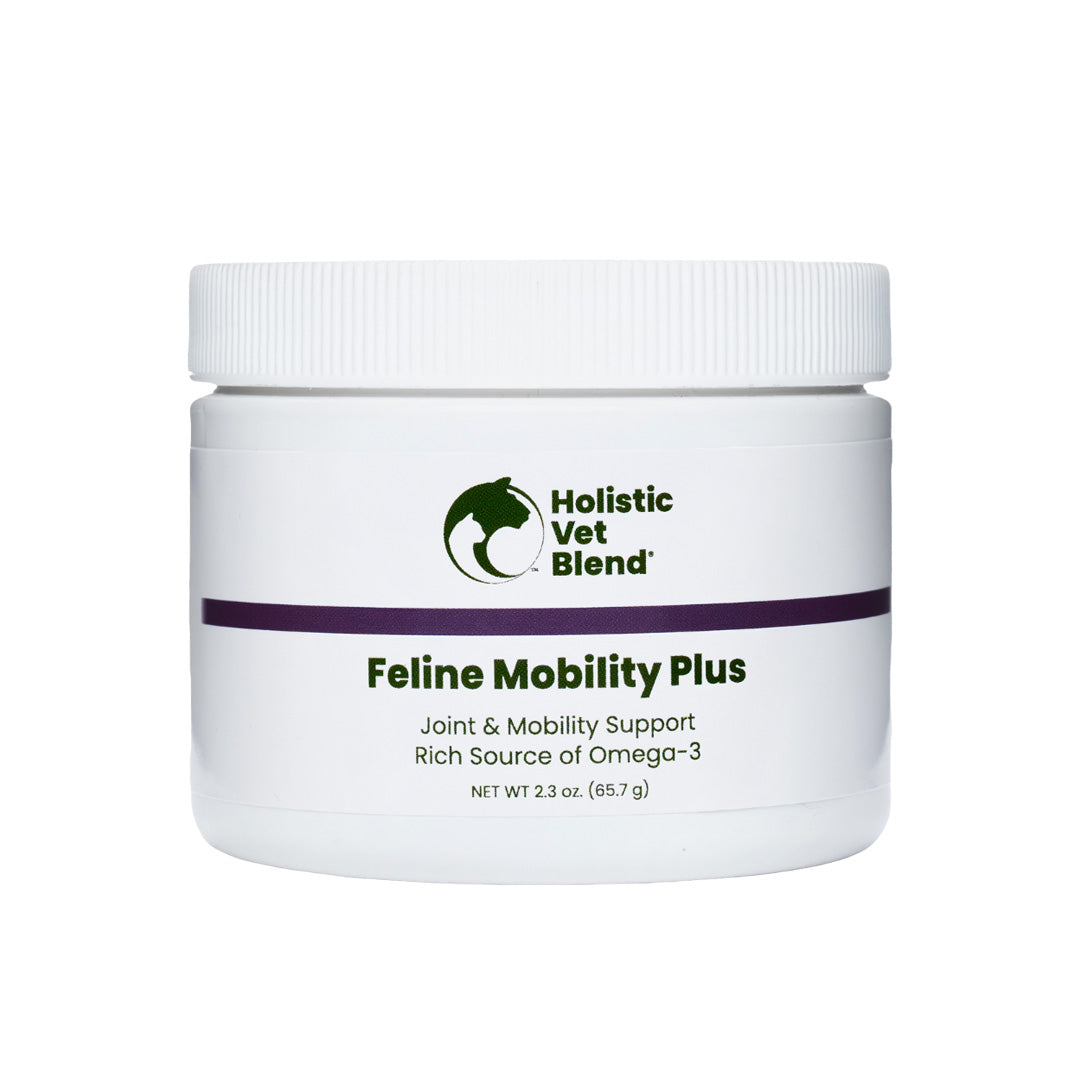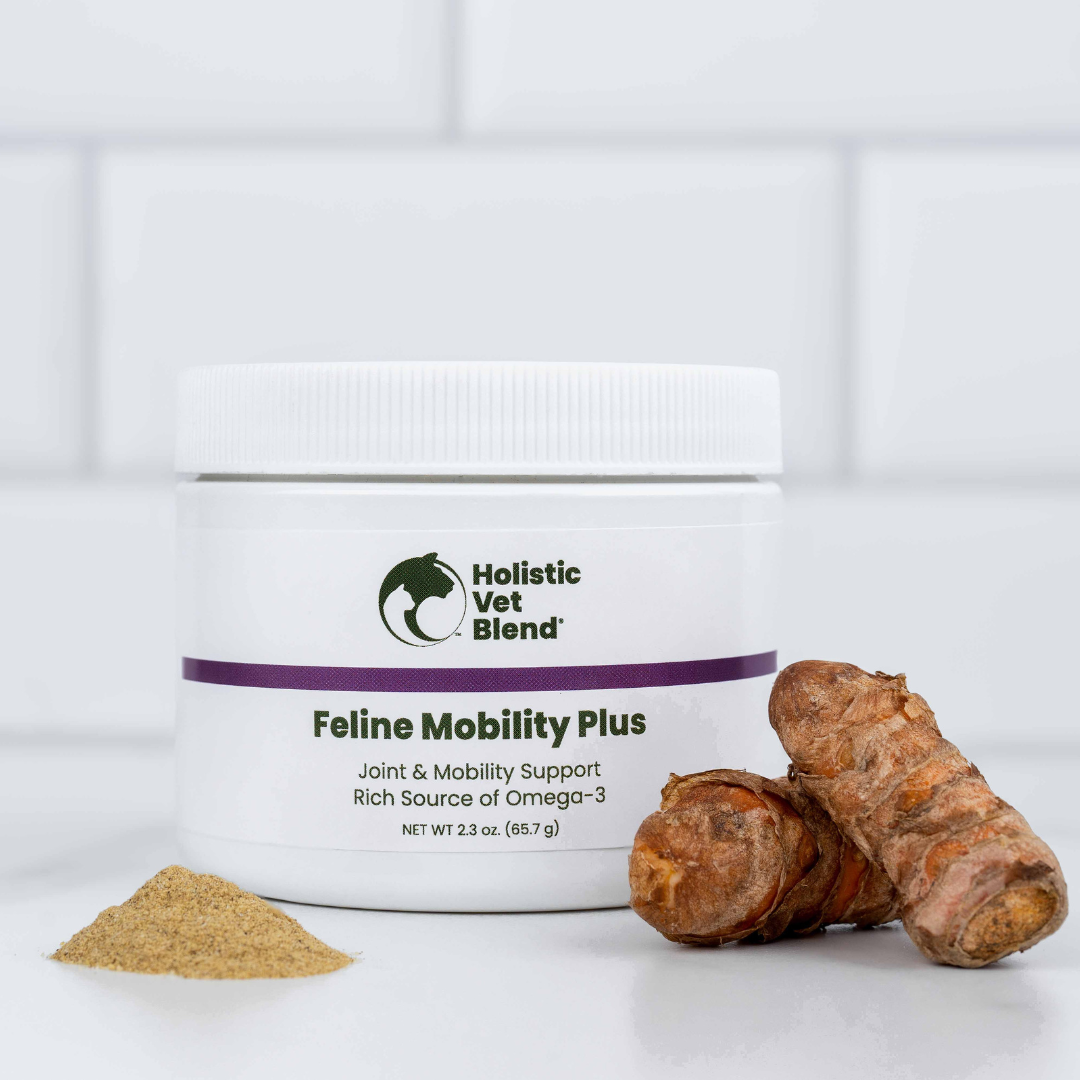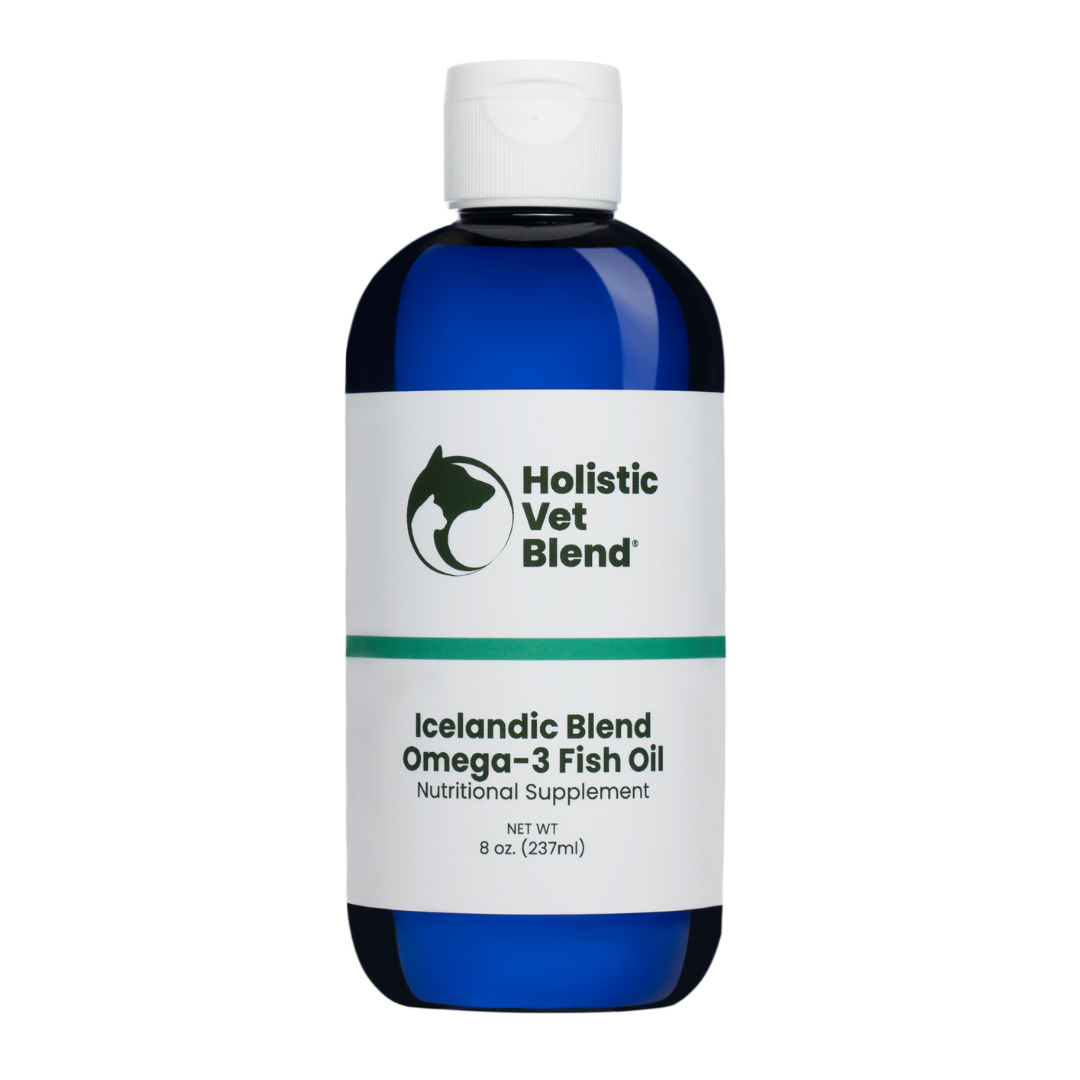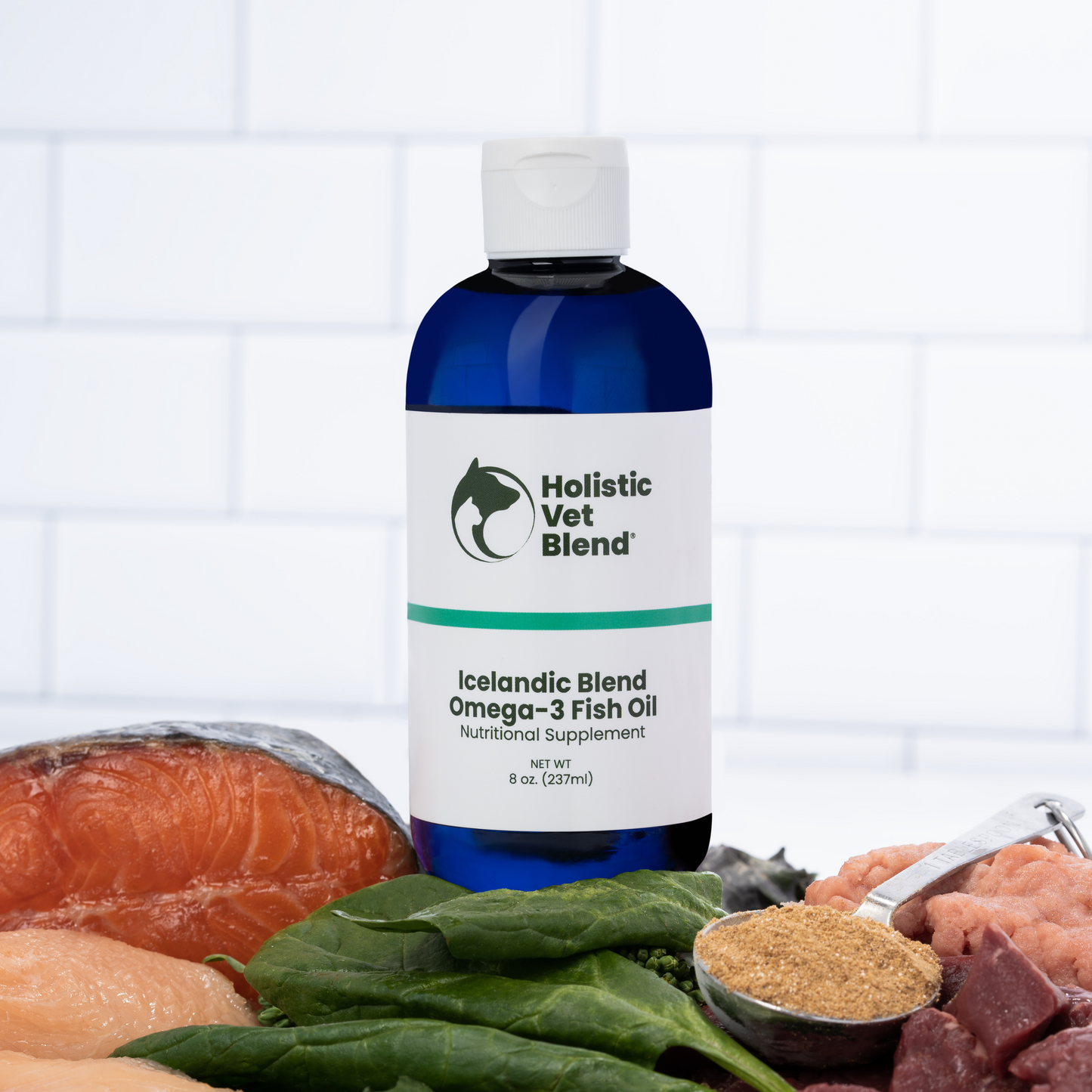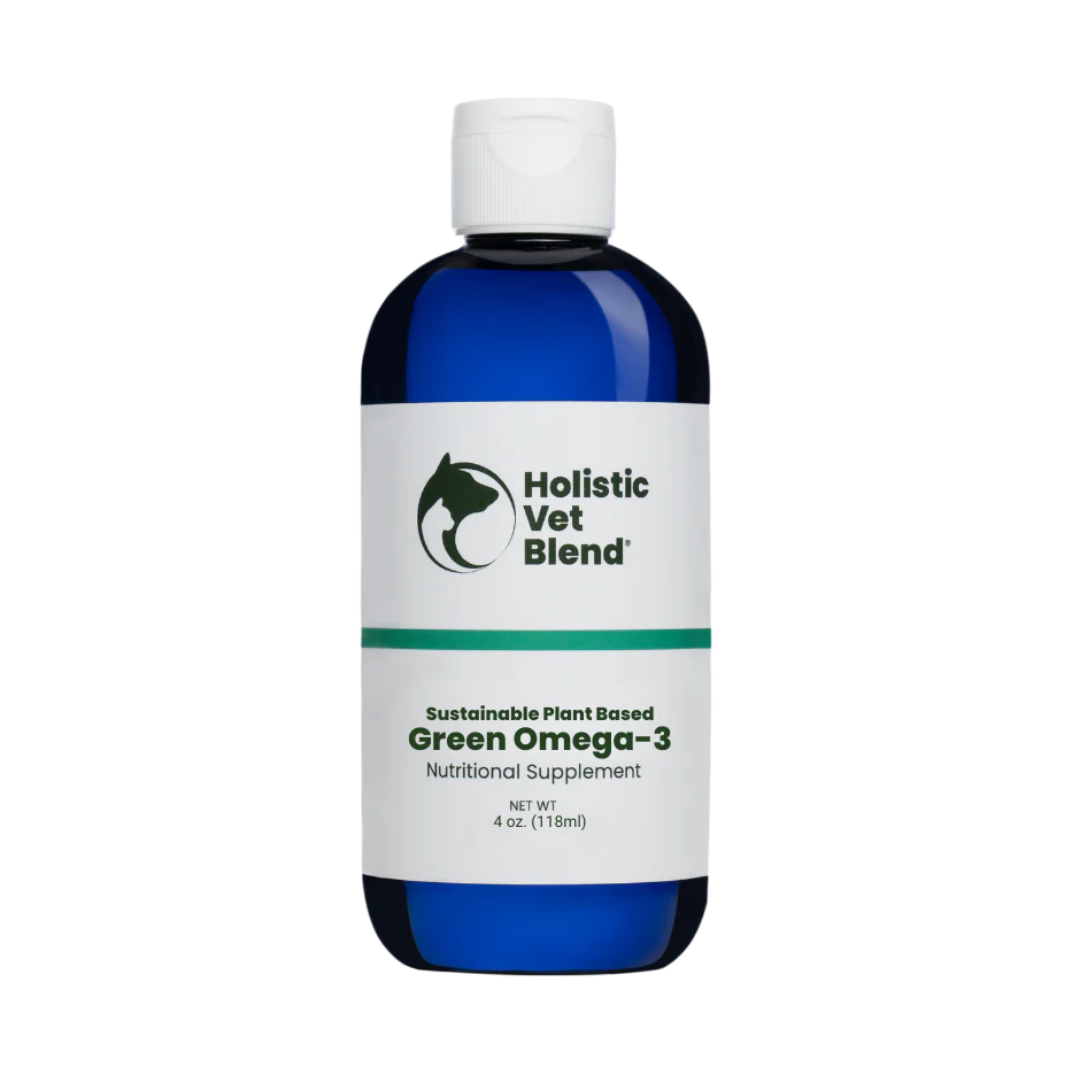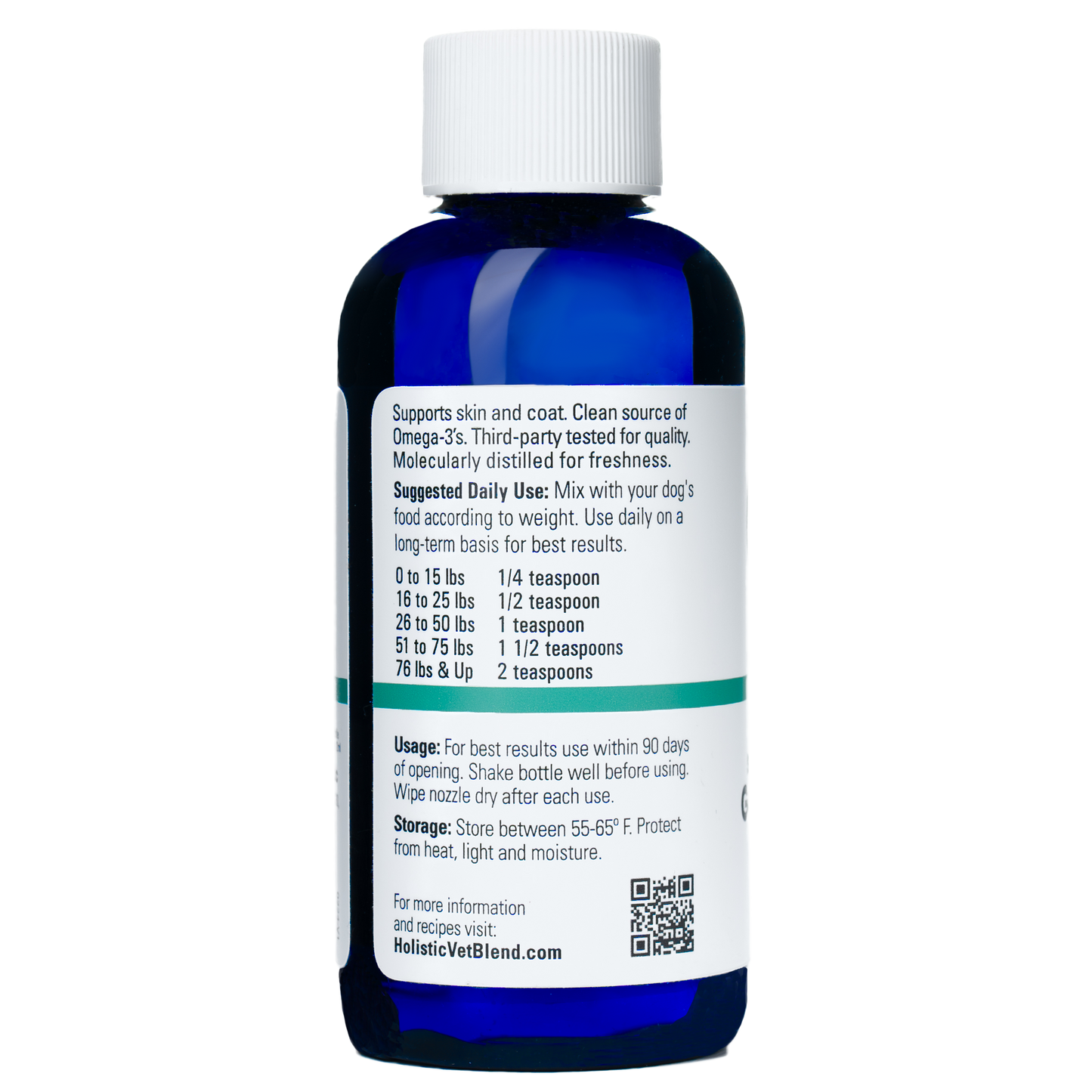
After seeing the devastation of cancer in over 30 years of veterinary practice, I am deeply committed to empowering pet parents with the knowledge and practical next steps to help prevent and treat cancer naturally. The reality is sobering: 1 in 3 dogs will develop cancer in their lifetime, and cancer remains the #1 cause of death in dogs over the age of two. In this blog post, we will review hemangiosarcoma, which accounts for 5-7% of all canine cancer cases, holistic treatment, and the typical average survival time of affected dogs(1)(2).
We will go over awareness, early detection, and an action plan from the perspective of a holistic veterinarian. I have seen how a holistic approach shines when added to the treatment regimen of dogs with hemangiosarcoma, including insights from recent clinical trial findings.
Canine hemangiosarcoma and our dog Lily
We lost our German Shepherd Dog, Lily, at 9 years of age due to this cancer. She was a fantastic dog and so full of life. Unfortunately, the cancer started inside her heart, and when it ruptured, she had a very difficult time breathing. Her heart was failing suddenly, and she was so distressed.

I knew my Lily struggled to breathe, and we had to act fast. An ultrasound of the heart revealed that a tumor in her right atrium had ruptured and there was pericardial effusion, which is blood pooling around the heart muscle. This impedes its ability to contract and circulate blood. We made the agonizingly difficult decision not to treat her and humanely euthanized her. We could extend her life, but not with any quality of life.
Although I had treated other dogs with heart hemangiosarcoma (one survived a year after the fluid was drained off of his heart), Lily was not a good candidate due to the severity of her condition. Every case is different, and you must look at the situation and the dog and consult with your family and a trusted vet to make the best decision.
In some cases, a definitive diagnosis can be made when surgery is conducted to remove the bleeding tumor, especially in the case of splenic hemangiosarcoma, followed by supportive care. In other cases, additional testing may guide the diagnosis. Your vet can refer you to a specialist to discuss your unique situation and prognosis.
Do cats get hemangiosarcoma?
Hemangiosarcoma is not a common cancer in cats, but when it does occur, it typically develops in the skin or on the gums.
Define hemangiosarcoma
Hemangiosarcoma is a highly malignant cancer that primarily affects blood vessels, commonly occurring in dogs. It develops from the endothelial cells lining blood vessels and can arise in various organs, including the spleen, liver, and heart. Early detection of potential risk factors is crucial for effective treatment and improving your pet's prognosis.
Is your breed at risk for hemangiosarcoma in dogs?
The following breeds are prone to hemangiosarcoma:
- Golden Retrievers
- Boxers
- German Shepherds
- Labrador Retriever
Data from extensive studies, such as the Golden Retriever Lifetime Study, show that about 7-8% of enrolled dogs developed hemangiosarcoma by a median age of 8 years, with visceral forms (affecting organs like the spleen or heart) being the most common. In Golden Retrievers, the lifetime risk is estimated at 1 in 5.(3)
Overall, hemangiosarcoma is a leading cause of cancer death in dogs. The cancer is aggressive, often progresses without apparent symptoms, and typically presents suddenly due to internal bleeding, making early detection and intervention challenging.
Common Signs of Hemangiosarcoma Cancer in Dogs
When hemangiosarcoma is advanced, it may manifest as acute collapse and shock if the tumor bursts in the abdomen or the heart. Some dogs may have abdominal swelling.
Other early warning clinical signs of cancer in general include:
- Unexplained weight loss
- Loss of appetite
- Gastrointestinal upset (vomiting or diarrhea)
- Decreased energy
- Lumps: in the skin or lymph nodes
- Abdominal pain
- Pale gums
Unfortunately, sudden death can occur when this tumor ruptures, especially if it is in the heart.
Hemangiosarcoma Diagnosis
These are some of the steps involved in diagnosing hemangiosarcoma in dogs:
- Physical Exam and History: Dogs may show signs like tiredness, weakness, loss of appetite, a swollen belly, pale gums, or bleeding spots. Sometimes, dogs don’t show any symptoms. If a mass is noted during the exam, further tests may be needed.
- Blood Tests (CBC and Biochemistry): Most dogs have anemia, meaning they lack enough red blood cells, often due to internal bleeding or blood clotting problems. Other blood abnormalities may also be present. These tests can show low protein levels and increased liver enzymes or kidney waste products if the disease affects other organs.
- X-rays and Ultrasound): X-rays can reveal a mass in the belly or the presence of blood from a ruptured tumor. Ultrasound of the heart and abdomen can give a clearer picture of the organs and can help find tumors or metastases (spread of cancer).
- Biopsy and Tissue Analysis: The most definitive diagnosis comes from surgically removing and examining the tumor tissue under a microscope, checking for cancer features.
Why Early Detection Matters
Early detection saves lives. As in human medicine, a goal in veterinary medicine is catching cancer early in dogs, which leads to far better treatment outcomes. Dogs diagnosed before showing symptoms, whether through routine screening or vigilant observation, have improved chances for successful treatment.
Dogs can’t tell us when something’s wrong. Many cancers, including aggressive types like hemangiosarcoma and lymphoma, may show only subtle signs at first, such as unexplained weight loss, changes in appetite, or mild lethargy.
Routine screening is now possible. Blood tests called "liquid biopsy" can screen for potential malignancies. Unfortunately, they may be nonspecific and do not always provide a definitive diagnosis. Your veterinarian or veterinary oncologist can guide you to their utility in your situation, especially if you have an at-risk breed. These tests provide a non-invasive way to screen for multiple cancer types, including some of the most common and aggressive forms.
Vitamin D and Cancer
From experience observing aggressive tumors like lymphosarcoma, hemangiosarcoma, histiocytoma, and other fast-moving malignant cancers, I have tested and found many of these dogs to be deficient in Vitamin D3. That being said, association does not equal causation. While low vitamin D correlates with cancer progression in dogs and cats, inflammation or disease processes may drive depletion.
I have done some research to find insights into this relationship, and it's worth noting that while some studies don't support a relationship, there is plenty of information about how it influences the immune system and is associated with many chronic diseases.
The Role of Vitamin D3 and Chronic Disease
It's well known that low Vitamin D increases the risk of contracting COVID and the common flu in humans. Other diseases have been associated with low Vitamin D, such as gastrointestinal disorders, liver disease, immune-mediated diseases, congestive heart failure, several cancers, and chronic kidney disease (4). I hope Vitamin D3 testing will become more available for pets as it has for people.
Holistic Treatment Options for Hemangiosarcoma
There is no one protocol for the treatment of any cancer. I am outlining what I have found to be the most helpful supplements that have some evidence of helping improve outcomes in dogs with hemangiosarcoma cancer, while minimizing side effects.
1. Turkey Tail Mushrooms (Coriolus versicolor)
A landmark University of Pennsylvania study tested a polysaccharopeptide (PSP) extract from turkey tail mushrooms in dogs with hemangiosarcoma(5).
Key findings:
- 199-day median survival time for dogs receiving 100 mg/kg/day of PSP, more than double the typical 86-day survival without treatment.
- No adverse effects, making it a safe standalone natural therapy.
- This research positions the turkey tail as a viable alternative to chemotherapy, particularly for owners who prioritize quality of life.
-
PSP may inhibit metastasis and modulate immune functions.
2. Yunnan Baiyao
This traditional Chinese herbal formula is widely used to control bleeding.
There are limited published scientific studies specifically investigating the use of Yunnan Bai Yao in dogs with hemangiosarcoma. Yunnan Bai Yao is a traditional Chinese herbal medicine commonly used in veterinary practice for its purported hemostatic and anti-inflammatory properties, especially in cases of bleeding or hemorrhage. Rigorous scientific evidence supporting its effectiveness in treating hemangiosarcoma in dogs remains scarce, but anecdotally, I have seen it used with great success.
Be careful sourcing this herbal supplement. Get it from a respected herbal supplement supplier, as not all sources are trusted.
3. Omega-3 Fatty Acids and Lymphoma Outcomes
Studies on dogs with lymphoma reveal that omega-3s (EPA/DHA from fish oil) improve outcomes:
- Better outcomes: Supplementing the diet with omega-3 fatty acids could improve outcomes in dogs undergoing chemotherapy for lymphoma. The findings of one study suggested that dogs receiving omega-3 supplements had some improvements in immune response and overall well-being, and there was a trend toward longer survival times compared to dogs not receiving the supplement(6).
- Reduced inflammation: Omega-3s can lower inflammatory markers linked to cancer progression(7).
4. Diet: "Let food be thy medicine and medicine be thy food." -Hippocrates
Prioritize anti-inflammatory, low-carb meals with fresh proteins, turmeric, and leafy greens.
A species-appropriate, whole-food diet is critical:
- Prioritize high-quality protein (e.g., grass-fed meat, fish).
- Avoid processed kibble and simple carbohydrates.
Incorporate antioxidants (blueberries, leafy and cruciferous greens), and natural anti-inflammatories like turmeric. Check out the recipe for Golden Paste here.
Let your dog's food be their food.
Don't overburden your dog's food with their medication and supplements. You want to make sure they get plenty of quality nutrition when they are battling hemangiosarcoma cancer. Medication and capsules in their food, when found, will turn them away from their next meal. You might be able to fool them a few times.
Prioritize supplements and medication wisely. Your veterinarian can help you with anti-nausea supplements and appetite stimulants if needed.
Are there any proven strategies to prevent hemangiosarcoma?
At present, there are no definitive preventive measures for hemangiosarcoma in dogs. However, in humans, support for feeding a minimally processed versus an ultraprocessed diet plays a role in the prevention of cancer and chronic disease (8). Of course, maintaining a healthy weight is essential in the prevention of cancer.
Promising new technologies and research offer hope for the future, but they are still in the research phase. Meanwhile, a healthy, minimally processed diet, avoiding obesity, regular veterinary physical examinations, sun protection (for the cutaneous form), and close monitoring of susceptible dogs is advised.
Key Takeaways for Pet Parents
- Screen early: Consider screening ultrasounds and blood tests for high-risk breeds, especially if you are concerned about abnormal symptoms.
- Combine therapies: Turkey tail, Yunnan Baiyao, and omega-3s work synergistically.
- Quality over quantity: Holistic care focuses on meaningful time, not just survival.
By blending cutting-edge research with natural therapies, we can offer dogs safer, more compassionate cancer care. Always consult a holistic veterinarian to tailor a plan for your dog’s unique needs.
References:
- Vail, D. M., & Oxford, J. S. (2010). Cancer in dogs: An overview. Veterinary Clinics of North America: Small Animal Practice, 40(4), 703-717.
- Thamm D, Withrow SW: Miscellaneous Tumors: Hemangiosarcoma. Withrow & MacEwen's Small Animal Clinical Oncology, St Louis, MO. Saunders/Elsevier 2014 pp 679-88.\
- O’Neill, D. G., et al. (2019). The Golden Retriever Lifetime Study: establishing an observational cohort study of dogs to determine risk factors for cancer and other diseases. Veterinary and Comparative Oncology, 17(3), 356–368.o
- Zafalon, R. V. A., Risolia, L. W., Pedrinelli, V., Vendramini, T. H. A., Rodrigues, R. B. A., Amaral, A. R., Kogika, M. M., & Brunetto, M. A. (2020). Vitamin D metabolism in dogs and cats relates to diseases not associated with bone metabolism. Journal of Animal Physiology and Animal Nutrition, 104(1), 322–342.
- Becker, A. B., et al. (2012). Single agent polysaccharopeptide delays metastases and improves survival in naturally occurring hemangiosarcoma. Evidence-Based Complementary and Alternative Medicine, 2012, 384301.
- Ogilvie, C. A., et al. (2004). Effect of dietary omega-3 fatty acids on dogs with lymphoma. Journal of Veterinary Internal Medicine, 18(2), 184-192.
- Calder PC. Marine omega-3 fatty acids and inflammatory processes: Effects, mechanisms and clinical relevance. Biochim Biophys Acta. 2015 Apr;1851(4):469-84. doi: 10.1016/j.bbalip.2014.08.010. Epub 2014 Aug 20. PMID: 25149823.
- Boeing, H., et al. (2019). Diet and Cancer Prevention. Nutrients, 11(3), 604.




